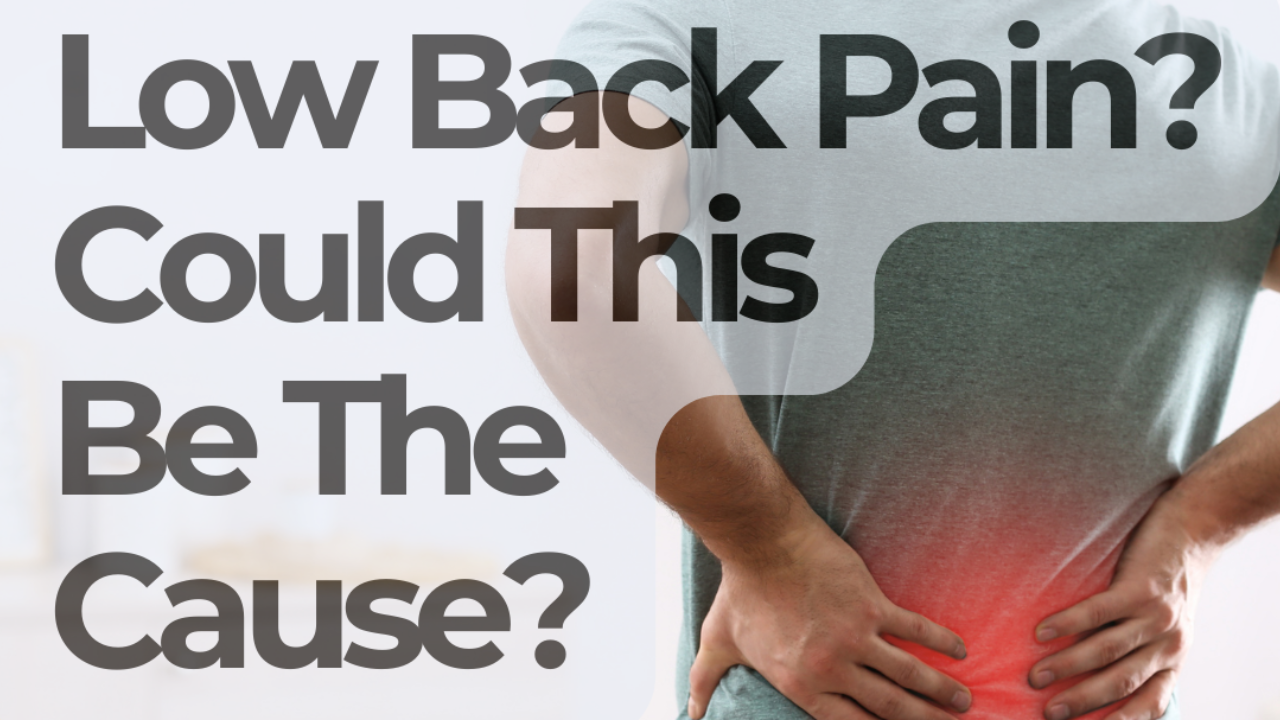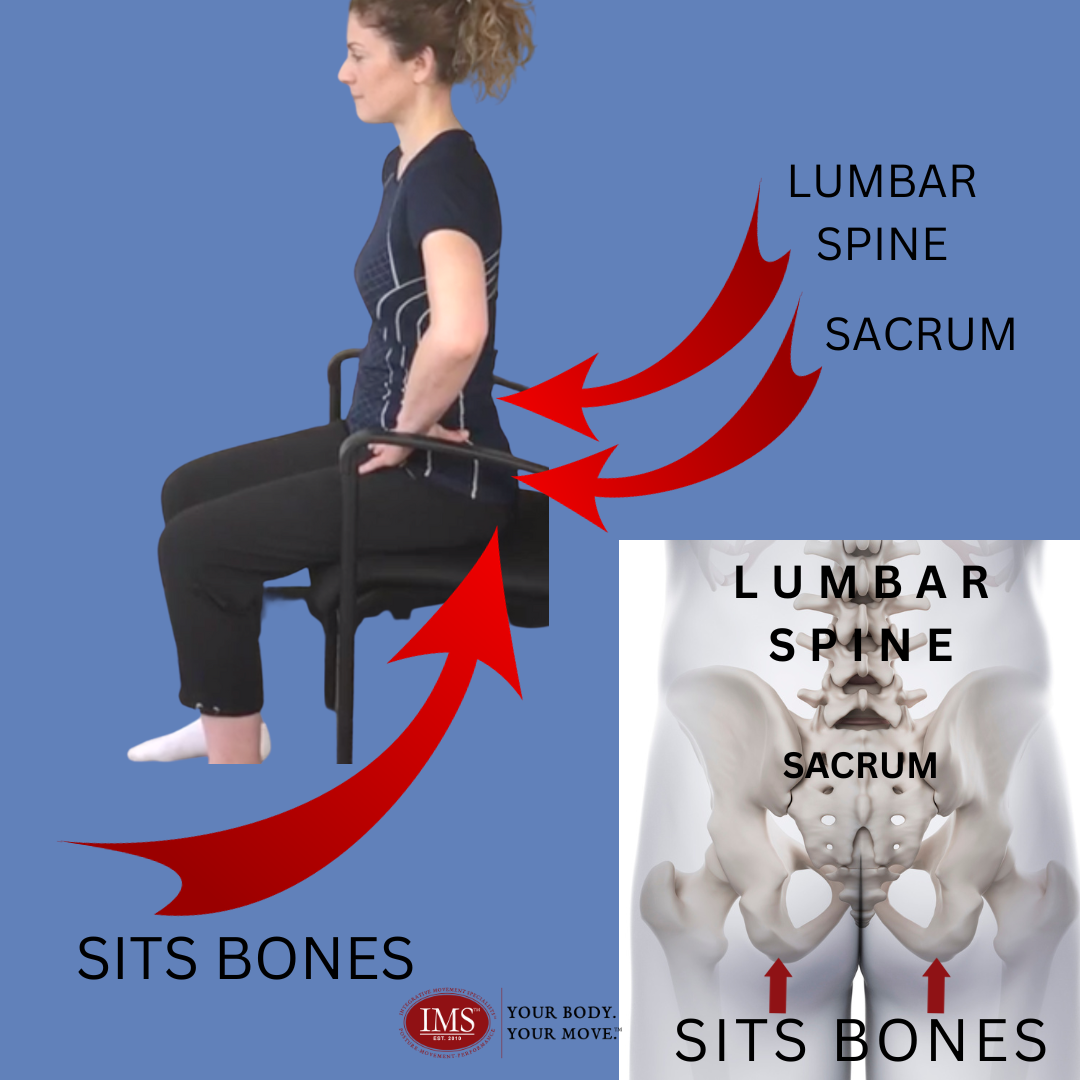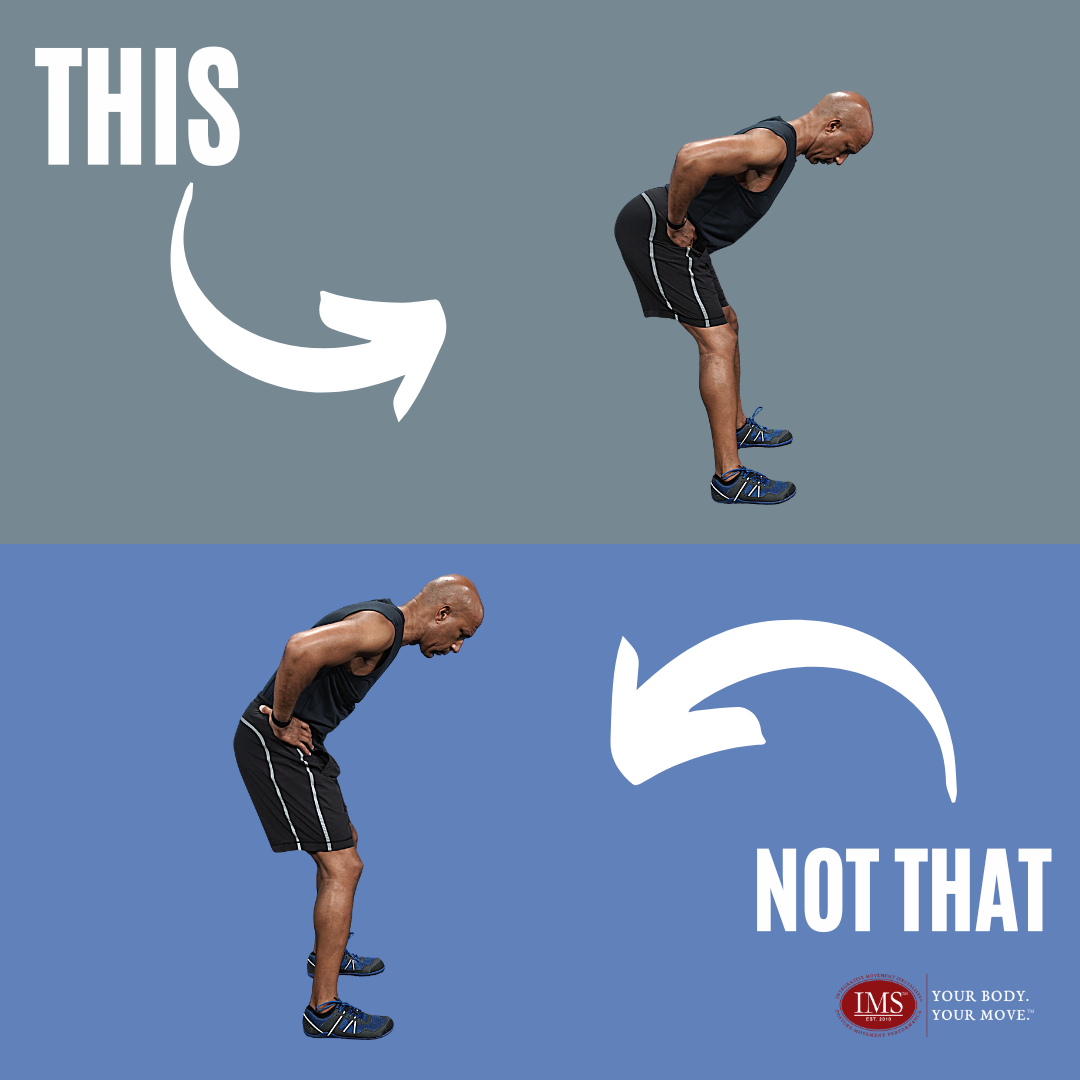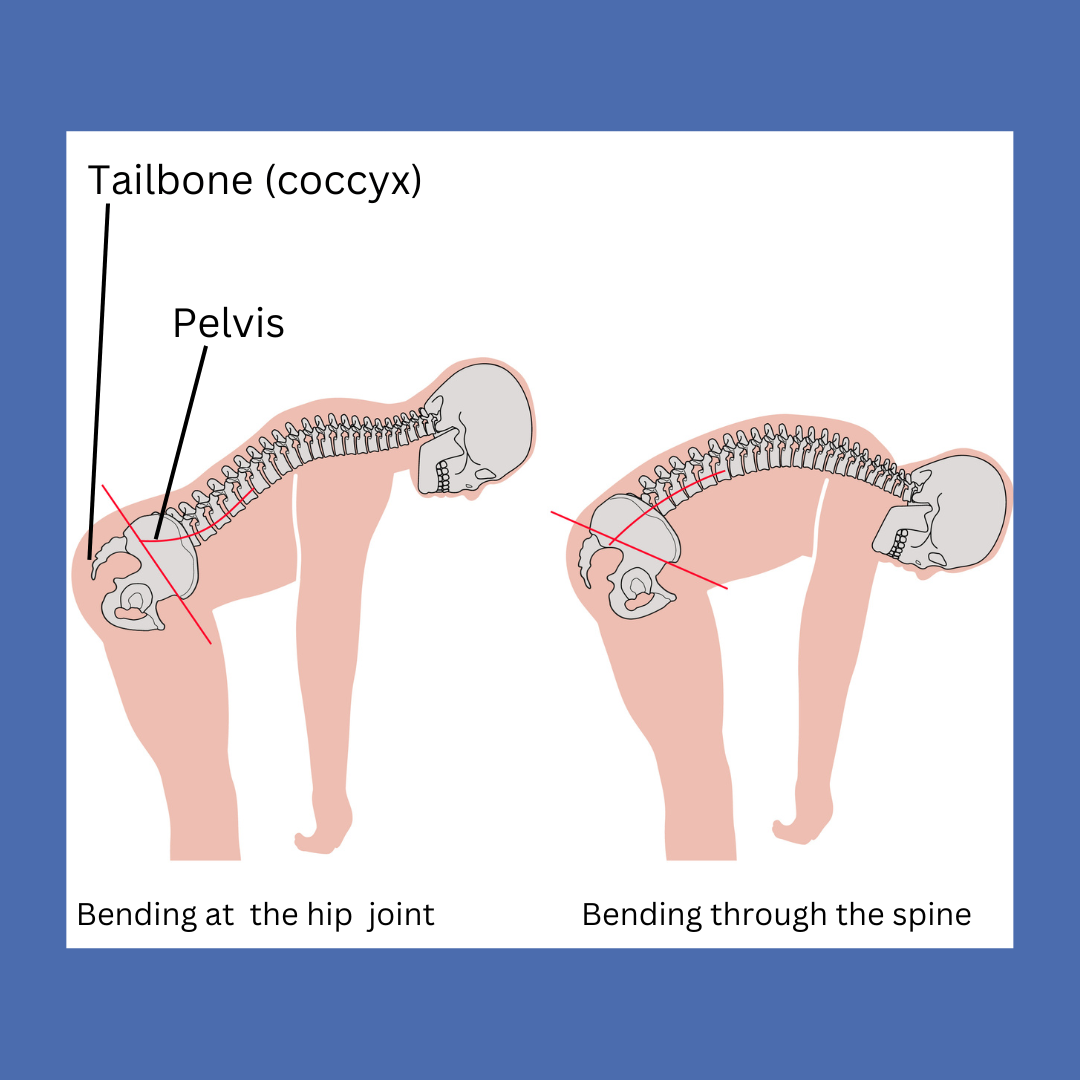Blog
How You Squat is Important for Your Back and more...

|
||||
|
Move Well Webinar: 3 Exercises That Can Help Or Hurt Your Back
|
|||
|
Low Back Pain? Could This be The Cause?

In our last installment, we shared a way to change how you sit to decrease the pressure on your lower back a.k.a., your lumbar spine, specifically the pressure on the discs between your vertebrae. The cervical spine and the lumbar spine are the areas where disc herniations occur most often.
In this installment, we will look at three things that you do each day that can contribute to pressure and nonoptimal alignment of your lower spine.
How you sit or stand.
Depending on what you do for work or how you spend your time you likely sit, stand, or a combination of both throughout your day. We touched lightly on sitting optimally last time. As a reminder, you want to sit on your SITS bones. These bones are located at the bottom of your glutes. (see picture below)

How you stand matters as well.
If you tend to stand with your weight mostly in your heels and your knees locked you likely also stand with your glutes slightly squeezed causing your glutes and pelvis to tuck unde...
Posture and Low Back Pain

Do you ever feel like your lower back tighten up while you are sitting or standing for any length of time?
This is unfortunately too common and as it turns out quite costly. According to the Institute for Health Metrics and Evaluation between 1996-2016 treatments for lower back and neck pain cost nearly $77 billion by private insurance, $45 billion by public insurance, and $12 billion out of pocket by patients themselves in the U.S.
Those numbers likely don't include over-the-counter medications and some non-medical treatments for pain.
While injury, surgery, and other physical trauma can be sources of back discomfort there are many lifestyle or habit-driven activities that over time can be the main driver of back pain, tightness, and discomfort.
Let's start with an easy not-so-easy....posture.
- Easy, because for many of us, it is something we can readily fix. Not so easy because
- You have to wade through the plethora of conflicting information.
- The information may not be wron...
Have you ever heard or been told you need to bend at your knees to save your back

Have you ever heard or been told you need to bend at your knees to save your back?
While it is not a complete myth it definitely overlooks a very large important joint that you need to bend or move through when bending, squatting, deadlifting, picking something up, etc., and that is the ability to move through your hip joint.
Let's take a look a how to or what it means to bend or move through your hip joint versus not moving through the hip joint.

In the next picture, you can see more from the anatomical perspective of what is happening to the spine with either version.

Note the difference between the two pictures above.
When we bend at the hip joint the entire spine, and pelvis move together around the hip joint. Note where the tailbone is in either picture. In the first picture, the tailbone is almost parallel to the floor. In the second picture, the tailbone is pointing down towards the floor and you can see the bending in the spine as the pelvis has not moved with the s...


